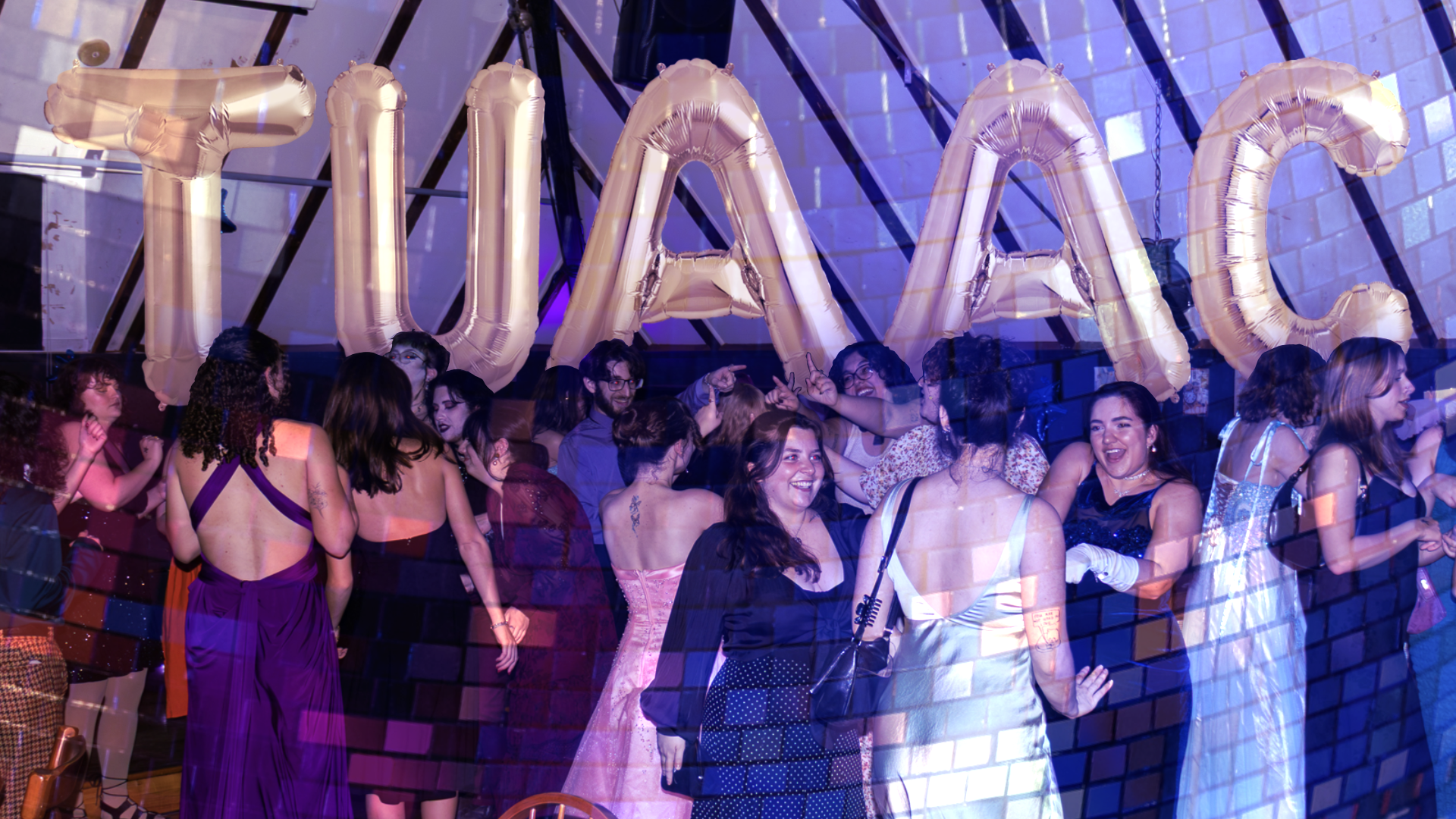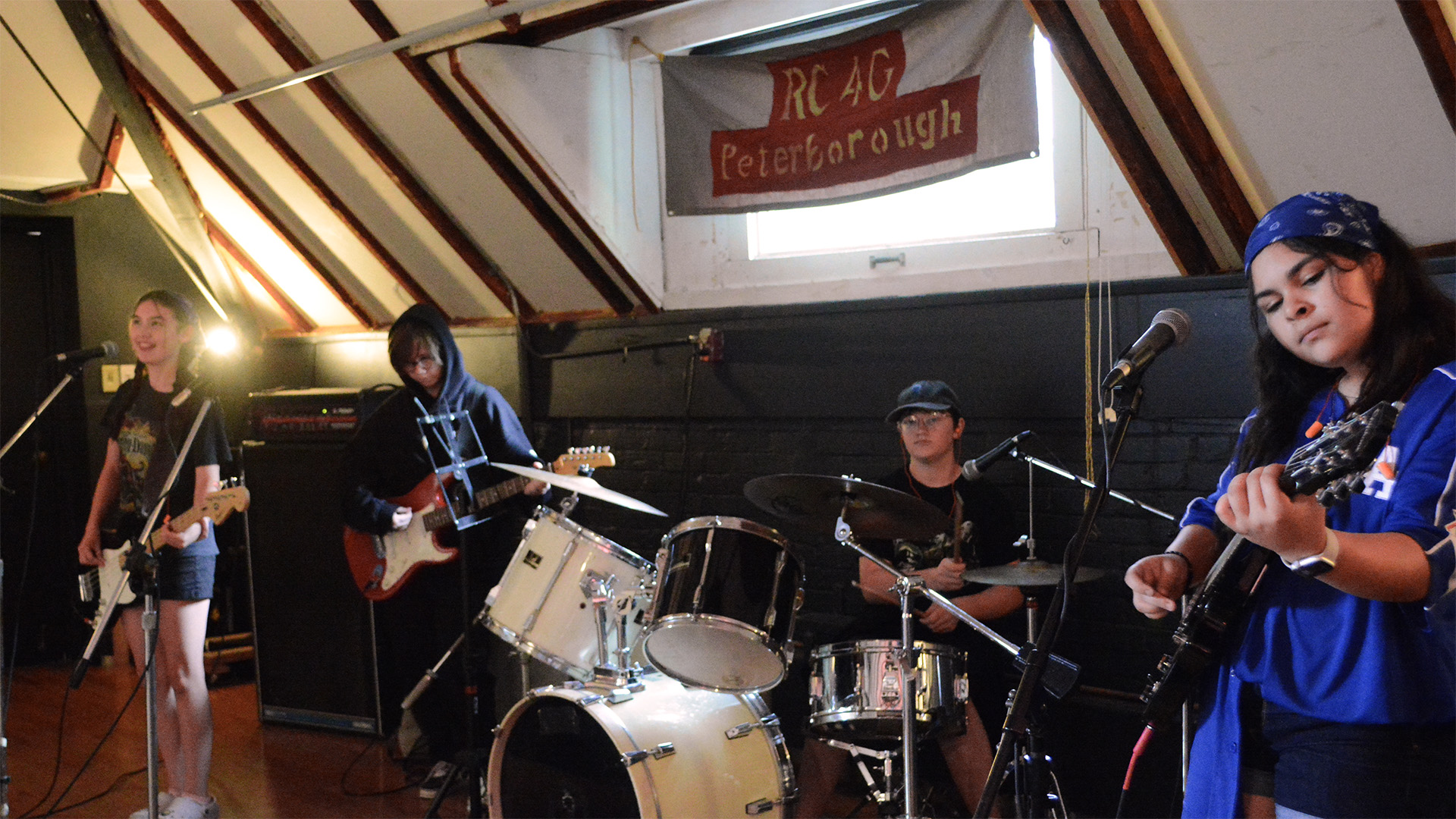Come, come, gather round. Permit me, tender-eyed freshman and bedraggled seniors both, to tell you a story about the old times. It is not a story to which I myself bore witness. Rather, those before me passed this story down through successive classes of Trent students in hushed tones around levy meetings, and in reverent prose in this very publication until such a time as it would one day reach my ears.
It is a ghost story, and like many ghost stories, it concerns a great, old house. Said house has changed hands many, many times over the years, and seen many faces flit through its foyers and halls. Many go so far as to claim this house is haunted, though I’ll let you be the judge of that. Our story proper begins all the way back in 1964—I daresay perhaps even earlier—though for the sake of introductions let's start a little closer to home, shall we?
Throughout my three (going on fourth and final) years at Trent University, the Peter Robinson Community & Student Association has proved a defining influence on my so-called “university experience.” The PRCSA is among the largest levy groups at Trent—second only to the student union in terms of both operating income and ancillary fees—and is responsible for the governance of Sadleir House, the student co-operative located in a Victorian mansion at 751 George Street N.
In March of 2020 I joined the Association’s Board of Directors, seeking to get involved during a comparably destitute pandemic year. In the years since, I’ve continued to serve on the board, and have worked for multiple community and student groups whose offices are located in the building—not to mention simply spending a lot of time enjoying the spectacular architecture and free coffee. It’s a great place to work and hang out, and I would highly recommend that every student who has not already frequented the house (be they first year or otherwise) register to use this indispensable study space. I myself am fortunate enough to work out of Arthur’s gorgeous office in Sadleir’s mid-century extension, something I appreciate every time I look through our lavish floor-to-ceiling windows.
However, Sadleir’s present state exists as somewhat of a compromise. While I daren’t discount the value and the privilege of having a downtown student co-operative, Sadleir is a concession to the loss of something fondly remembered that pre-dated it. Twenty years ago, Trent University lost something which has, in the years since, left an indelible mark on itself as an institution, and the student body which attends it.
Peter Robinson College, incorporated as one of Trent’s founding colleges alongside downtown sister campus Catherine Parr Traill College and former Trent holding Rubidge Hall, stood for nearly four decades on the site Sadleir House presently occupies.
In 2003, the Trent Board of Governors made the historic decision to shutter and sell Peter Robinson College. In the collective consciousness of students, alumni, and labour organizers in years since, Peter Robinson College looms large, a shorthand for a better time—in labour, in academia, in general. Its absence has left simmering resentments among the student body; its sale driven a wedge between the city and the University to whom they play host. Now, twenty years after its closure and subsequent disposal, it feels as though Peter Robinson is missed now more than ever. Generations of students who never set foot inside the college mythologize its memory and a belief of what it represented. In institutions the like of Sadleir House, the legacy of Peter Robinson endures, and the passionate dream of preserving what they perceive to be the fabric of the university in the face of ongoing efforts to package it up for sale.
Sadleir is, in effect, the successor to PRC—a mansion haunted by the spectre of its own loss.
As is the case with any building bearing a couple hundred years of associated history, Sadleir House is also purported to be more literally haunted. The house was built for local politician and businessman James Kendry in 1892, and changed hands many times prior to its 1963 acquisition by Trent. To this day, wardens allege you might encounter ghosts of former residents, especially in older parts of the building such as the Library of Justice, the parapet on the second and third floors, and the performance venue above the former carriagehouse outbuilding.
If Peter Robinson College haunts us, however, it does so in a markedly Eerie—to borrow from Mark Fisher—way. It is hard to articulate the ramifications that a series of policy decisions, or indeed the culture which preceded them, have had on Trent University today. Nonetheless, the sale of PRC has not just shaped Trent University materially—through the loss of the physical space, and the ensuing redistribution of institutional capital—but also culturally. Any attempt to parse the change PRC effected upon Trent as an institution in both its life and death is necesarilly also an attempt to parse its effect on Trent as a community—to quote Fisher, “the way[s] that ‘we’ ‘ourselves’are caught up in the rhythms, pulsions, and patternings of non-human forces.”
To better understand this legacy, then, one must go even further back into the annals of Arthur and the recollections of past patrons of the college proper. PRC as it was is not as we remember it, and as we remember it is necessarily not how it can ever be today. Peter Robinson College exists simultaneously as an idyllic, imagined Atlantean utopia, despite its being very much a real place, once frequented by real people who lived complicated, boring, real lives both good and bad—though to admit that somewhat tarnishes the pristine image of PRC that so many hold.
I, however, hold no such desire to mindlessly parrot the “I miss PRC” line. It is precisely because of the complex quotidian tensions therein that PRC remains so interesting, to me, to this day. In order, then, to properly give the college its due and in order to contend with its considerable legacy, one needs first to go back to the beginning. Every ghost lives a life before they pass, and Peter Robinson College proves no exception. Every ghost story is thus equally a life story, if only in negative space. To that end, it behooves me to start not with the college’s sale and concurrent demise, but rather, at the beginning.
The idea of this project is to chronicle, over the course of this volume, the history of the college system, the culture of Peter Robinson College itself, the controversy surrounding its sale and closure, the legacy it left and attempts to repatriate the college by the student body thereafter. This is necessarily a difficult story to tell, and any attempt made by this author to produce a comprehensive record will almost certainly fail.


.png)


.jpg)


.jpeg)



.jpg)


.jpg)









.png)